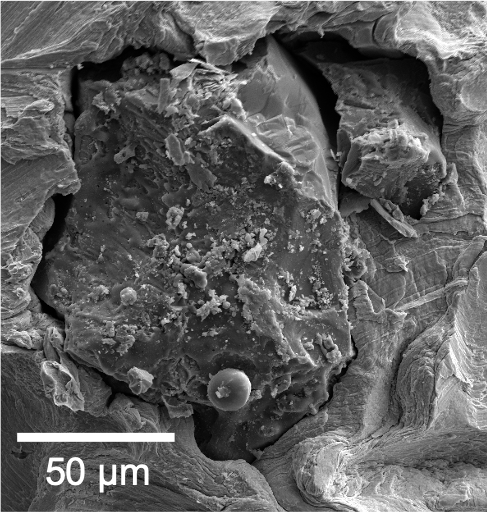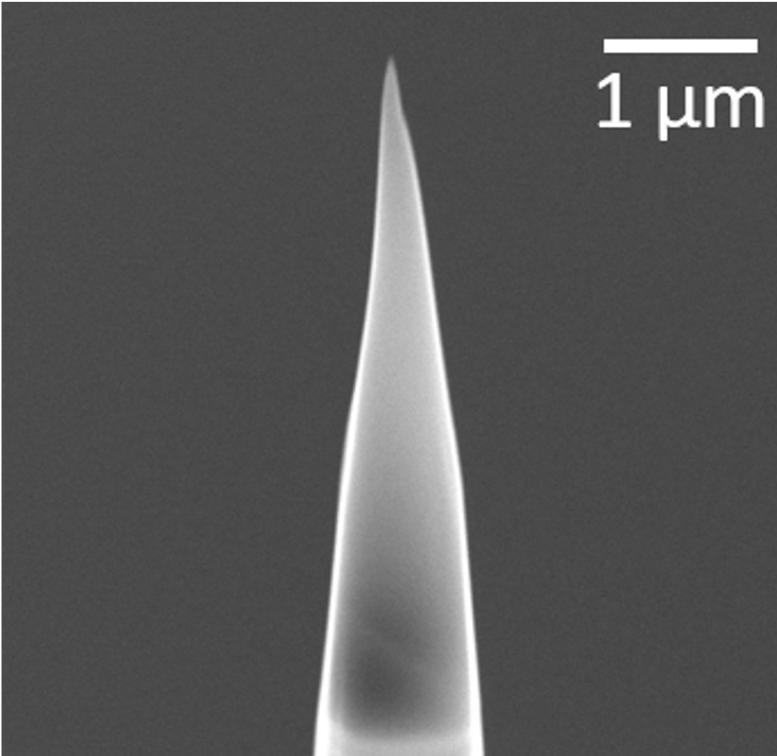A single grain of Apollo moon dust opens new world of lunar science

Moon dust is precious to Earthlings; after all, only about 900 lbs. (400 kilograms) of rock came back during the Apollo human lunar-landing missions in the 1960s and 1970s.
So a team of scientists set out to find a way to analyze moon dust based on only a single grain of the material. The researchers reported their results in a new study that analyzes a single grain of moon dust gathered in 1972 by astronauts on the Apollo 17 mission.
"We're analyzing rocks from space, atom by atom," lead author Jennika Greer, a doctoral student in geophysical sciences at the Field Museum and University of Chicago, said in a statement. "It's the first time a lunar sample has been studied like this. We're using a technique many geologists haven't even heard of."
Related: NASA fed Apollo 11 moon rocks to cockroaches (then things got even weirder)
"We can apply this technique to samples no one has studied," co-author Philipp Heck, a curator at the Field Museum and an associate professor of geophysical sciences at the University of Chicago, said in the same statement. "You're almost guaranteed to find something new or unexpected. This technique has such high sensitivity and resolution, you find things you wouldn't find otherwise and only use up a small bit of the sample."
Researchers use the technique, called atom probe tomography, to learn more about the moon's history. For example, scientists can analyze samples to figure out how water and helium formed on the moon. Both compounds could be useful resources for future landing missions, the first of which NASA is planning for 2024.

In the sample of moon dust, or regolith, that she analyzed, Greer found water, helium, iron and even traces of weathering caused by the exposure of the regolith to harsh phenomena in space, including micrometeoroids and radiation.
Get the Space.com Newsletter
Breaking space news, the latest updates on rocket launches, skywatching events and more!
To find those features, she shaved a layer of a few hundred atoms of material from the surface, a sample much thinner than a sheet of paper, which is hundreds of thousands of atoms thick. Then, she placed the sample inside an atom probe at Northwestern University in Illinois and used a laser to carefully peel individual atoms off the sample and crash them into a detector plate for analysis. The team measured how long it took each atom to strike: The heavier the element, the more time it takes to reach the detector; for example, iron would travel more slowly than hydrogen.
According to the team, the same technique could be applied to samples from other solar system bodies. The Japanese Hayabusa2 and NASA's OSIRIS-REx (Origins, Spectral Interpretation, Resource Identification and Security-Regolith Explorer) spacecraft are slated to return to Earth in the next few years bearing samples from asteroids they visited. "This is a technique that should definitely be applied to what they bring back, because it uses so little material but provides so much information," Greer said.

Heck suggested that the technique could even be used on unofficial samples of moon dust, such as what astronauts accidentally brought back embedded in their spacesuits and tools. "Thousands of such grains could be on the glove of an astronaut, and it would be sufficient material for a big study," he said.
NASA is particularly interested in pursuing the technique to study space weathering. By comparing the weathered surfaces on the moon with regolith not exposed to space, scientists can learn more about what causes weathering and, by extension, could make predictions about what lies underneath the surface of asteroids and moons, the team said.
A study based on the research was published today (Feb. 7) in the journal Meteoritics & Planetary Science.
- Apollo 17: NASA's last Apollo moon landing mission in pictures
- NASA's 17 Apollo moon missions in pictures
- Never-before-seen NASA video shows scientists test Apollo 11 moon rocks for life in 1969
Follow Elizabeth Howell on Twitter @howellspace. Follow us on Twitter @Spacedotcom and on Facebook.

Join our Space Forums to keep talking space on the latest missions, night sky and more! And if you have a news tip, correction or comment, let us know at: community@space.com.

Elizabeth Howell (she/her), Ph.D., was a staff writer in the spaceflight channel between 2022 and 2024 specializing in Canadian space news. She was contributing writer for Space.com for 10 years from 2012 to 2024. Elizabeth's reporting includes multiple exclusives with the White House, leading world coverage about a lost-and-found space tomato on the International Space Station, witnessing five human spaceflight launches on two continents, flying parabolic, working inside a spacesuit, and participating in a simulated Mars mission. Her latest book, "Why Am I Taller?" (ECW Press, 2022) is co-written with astronaut Dave Williams.
-
SibylTheHeretic I have read that dust is a major contamination problem but I yet to see any proposal to address this problem. Proposed lunar habitats and landers do not incorporate any type of vestibule for decontamination before entering crew areas. Any references to articles about this?Reply -
rod ReplyAdmin said:Scientists found a new way to analyze moon dust based on only a single grain of the material.
A single grain of Apollo moon dust opens new world of lunar science : Read more
What is the cosmic ray exposure age (CRE) vs. the radiometric age(s)? Always interesting to compare different clock readings for the same object, when disclosed to the public.









